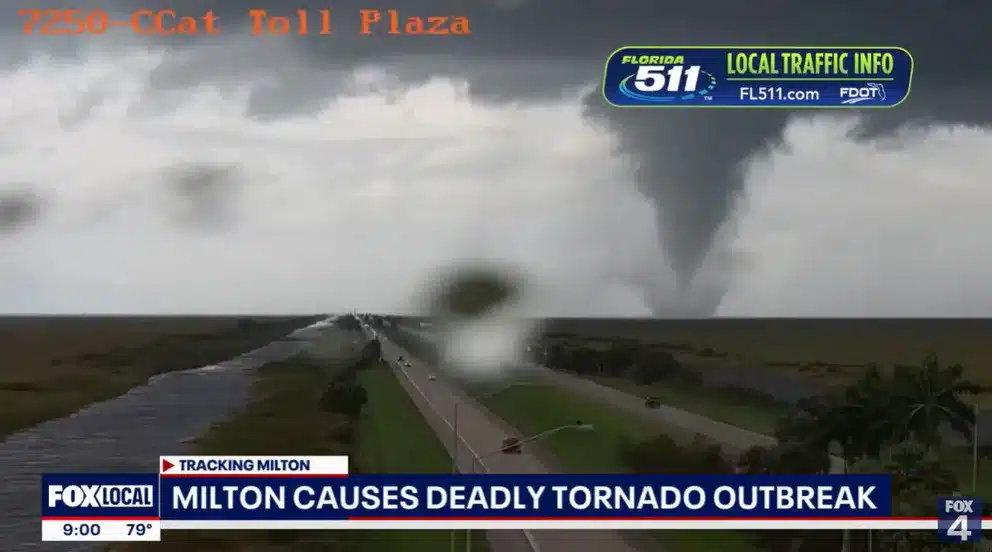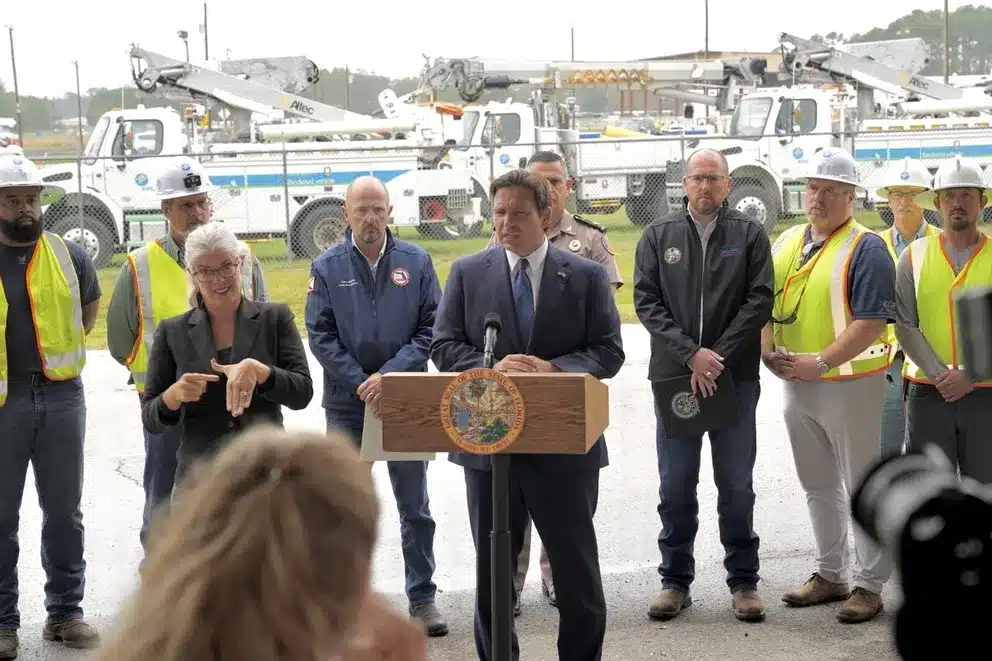As darkness descended, a powerful storm surged onto Florida’s Gulf Coast, bringing with it deadly tornadoes and severe flooding that left millions without power and devastated communities.
Hurricane Milton, classified as a Category 3 storm, made landfall near Siesta Key in Sarasota County, Florida, at approximately 8:30 p.m. on October 10. With winds surpassing 120 mph and relentless rain, the storm caused extensive damage, leading to over 1.1 million homes and businesses losing power, with the hardest-hit areas being Sarasota, Manatee, and Hardee counties.

In response, the Florida Division of Emergency Management (FDEM) urged residents through an official Facebook post to remain in their shelters and stay alert as the storm continued its onslaught.

As the hurricane approached, multiple tornadoes tore through St. Lucie County, causing significant destruction and fatalities. Sheriff Keith Pearson confirmed that “multiple fatalities” occurred at the Spanish Lakes Country Club, a senior living community near Fort Pierce. The exact death toll remains unclear as search and rescue teams continue to work tirelessly, listening for signs of life amidst the debris.

The damage in St. Lucie County has been extensive, with emergency responders operating non-stop to help those affected. Statewide, approximately 125 homes have been confirmed destroyed, with senior mobile home communities particularly affected, as reported by FDEM Director Kevin Guthrie.

Governor Ron DeSantis noted that the storm had triggered 116 tornado warnings across the state, with 19 tornadoes officially touching down, further highlighting the wide-ranging effects of Hurricane Milton.

In St. Petersburg, the storm caused unprecedented flooding, with over nine inches of rain falling in just three hours, marking a rare one-in-1,000-year rainfall event. The city, along with Tampa and Clearwater, was included in a flash flood emergency issued by the National Hurricane Center on October 9.
St. Petersburg’s Albert Whitted Airport recorded 16.61 inches of rain in a single day, creating life-threatening conditions throughout the area. Wind gusts were also reported to reach 102 mph at Sarasota-Bradenton International Airport and 105 mph at Egmont Channel. At the time, Hurricane Milton was about 20 miles northeast of Sarasota, moving east-northeast at 16 mph.

Due to the extreme weather, the National Weather Service warned of life-threatening flash floods, noting that the rainfall received in one day was equivalent to three months’ worth. Residents were urged to seek higher ground and avoid flood-prone areas.
State and local authorities have initiated a large-scale emergency response, dispatching task forces and rescue teams to assist affected regions. Sheriff Pearson stressed that the primary focus was on “life safety” as rescuers continued to search for anyone who may be trapped beneath the wreckage.
As Hurricane Milton moved inland, its intensity weakened, but it remained a significant threat. Authorities continue to advise residents to stay updated on official communications and follow safety instructions as Florida grapples with the storm’s devastating aftermath.










